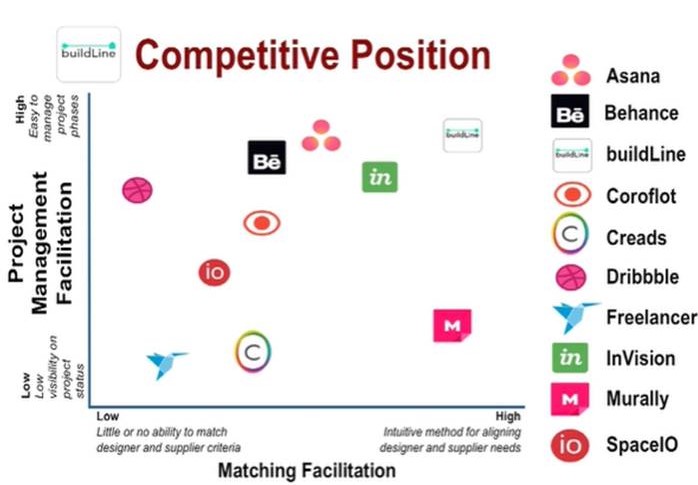Some people have said that if you stay far enough ahead of the competition, you never even have to think about them, or if you’re so close to the customer that you always know what the customer is wanting and needing, which I hope that you’re thinking that way, and that you never have to worry about the competition. Now, I disagree. How to determine competitive position is best addressed by when does the customer care about the competition?
What’s the customer doing when they care about the competition? Typically, the customer cares when they’re in a mode to buy or analyze a solution to their problem. When they care, they’re in a comparative mode.
Typically, our focus on competition is who are they? And what is our competitive advantage? That’s the way we talk about competition. Who are they? And what’s our advantage over them?
That’s not the way the customer thinks about it. The customer’s thinking about the competition when they’re in a comparison mode. We want to look at competitive position as the response to the customer being in a comparison mode. Let me ask a question—who’s your number one competitor? You can think through that; about all kinds of people and companies and products and services that you may be competing with; I’ll tell you this, your number one competitor is status quo; customer doing nothing and should inform how to determine competitive position.
It’s like the laws of physics; an object at rest will continue to remain at rest until, in our case, there’s great pain and urgency. However, once you get that object moving, in physics, it’s easier to keep it moving, and the status quo is very similar. Customers are hard to get moving because they perceive where they’re at to be safer, already proven, they’re familiar with it, it’s easier, and most people are resistant to change.
Do not ever forget that whatever you’re building is a product or a service. It must be simple to implement. If it’s difficult; if it takes a lot of work; status quo will be your number one competitor, and they’re not going to take any action.
Do you have competition already?
-
If you say yes, then
o You need to differentiate from the others.
o You’re probably in the mainstream market because that’s where the competition exists for services and products solutions.
New, disruptive products and solutions are introduced into the early adopter market first, and the mainstream waits for a leader to emerge before they buy. Then if you’re in the mainstream, where there’s a lot of competitions, then you will have competitors.
o Competitive position is critical.
-
If you say no, we don’t have any competition.
o The first question is: does the customer think there’s no competition or no alternative?
Remember, your number one competitor is doing nothing status quo. You always have competition in that aspect. In the customer’s mind, there may be many alternatives. Ask them, don’t try to figure it out. Go ask them what they think.
o Next, you can’t be in the mainstream if there’s no competition because the mainstream is where there is competition for an established product or service.
Remember this, if there’s no competition, there is no market, and you are going to have to educate and create the market, which means adding time to your financial runway of surviving, the financial cash flow runway. You might as well add another 12 to 18 months to the runway because you’re going to have to create an educated market. You have to create a competitive position so customers know where you fit and that informs how to determine competitive position.
If competitors already exist, you position yourselves; if there is no competition, you have to create it.
o Lastly, it could be a lifestyle business or a customized service, not scalable.
Mostly because some of these things cannot be duplicated. They’re not scalable, but they’re very customized, and then there may not be any competition.
Competitive position, how do you do it?
1) You must know your customer really well.
2) Select two axes based on customer number 1 and 2 pain points and create a competitive grid/graph.
You got to know number one and two pain points of your customer. If you miss these, you miss everything.
3) Identify innovative product/service competitors like you and indicate them on the competitive grid.
Identify other innovative solutions like you if you’re new and you’re in innovation. Who else is doing something similar to you although you may be the best solution?
4) Identify market competitors the customer is currently using and indicate them on the competitive grid.
Identify market competitors, where the customers are currently spending their money, and then position your company in the market.
The customer must know where you fit at a glance in the competitive landscape and have the budget to repurpose your solution. That is ultimately what we’re trying to do here, make the comparative position that the customers are trying to compare to show them exactly where you fit in the landscape. Once you have figured out how to determine competitive position, the customer needs to have money to repurpose or else you will be forced to create and educate a market.

This is an example of a competitive positioning grid by a company called Buildline. You’ll see build lines in the upper right hand corner. There are two axes—one is for project management facilitation, and the other is for matching facilitation. If there is a person that wants a high-end chandelier in their home, who provides those chandeliers? So let’s match the requirements to the supplier.
You can see on this chart for matching facilitation Murally is the one that’s the highest on that category, and they’re an existing supplier. Everybody looks at this chart and goes, I know who Murally is. Then on the other hand, looking at project management, many of us may use Asana, we do. For requirements to the supplier, you can see on this chart for matching facilitation the one that’s the highest on that category, and they’re an existing supplier. Everybody looks at this chart and goes, I know who Murally is.
Asana is recognized as a great project management software while behance and envision are up there next to it, all well-known project management software, but a lot of them aren’t really high on the matching facilitation. Asana is down at 50% and envisions a little bit higher.
Well, if I’m a customer, and I’m looking for this software that does project management and matching facilitation. If you show me this grid and I see the buildline way up in the corner, and I’m familiar with Murally, and I’m familiar with Asana. Right off the bat, I know exactly where Buildline fits.
It is as good in project management as Asana, and as good in matching facilitation as Murally put together. I will be interested and would want you to tell me more, and that’s exactly what you want your customer to do. Now if I’m way down at the bottom left hand corner, and like Freelancer, how do I get up to that right hand corner? The key is the actual axes.
This product was probably built for probably high-end home designers. If I was building track homes, and my product was cheaper and easier to use. Freelancer may be way up in that corner instead of Buildline, which may be a much more expensive product. You got to get the pain points right because if you miss them, the customer doesn’t see the value.
Finally, the product competitors:
- Would have a similar innovation, but it’s an inferior solution to you.
- Their existence validates a disruptive, innovative trend. You are there to show them exactly where you fit in the landscape, and they need to have money to repurpose or else you’re creating and educating a market.
When the smartphone first came out, there was one, and then there were two. After a while, everybody knew everybody was going to smartphones, except, of course, the Hangouts that never will and still use flip phones. The new product competitors validate the existence of an innovative trend.
Other market competitors, which are the current suppliers, but their aging solutions, this is where the customers are currently spending their money. Customers will recognize immediately who those people are. So they have to be on your comparison.
Then your solution is the one that calls out the market competitor because you want their money that the customer is already spending. You’re calling out the other product innovators like you because you want to show the shift, or innovation is inevitable, and you are the best product solution. You want to show customers where you fit in the market.
Summary
How to determine competitive position involves the process of knowing your customer very well; knowing number one and number two pain points of your customer; identifying your product/service and market competitors then mapping them out in competitive grid/axes, then positioning your company in the market.
The customer must know where you fit at a glance in the competitive landscape using the competitive grid and have the budget to repurpose your solution.

